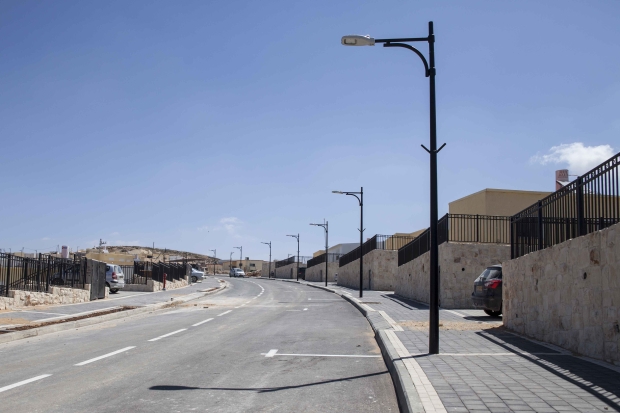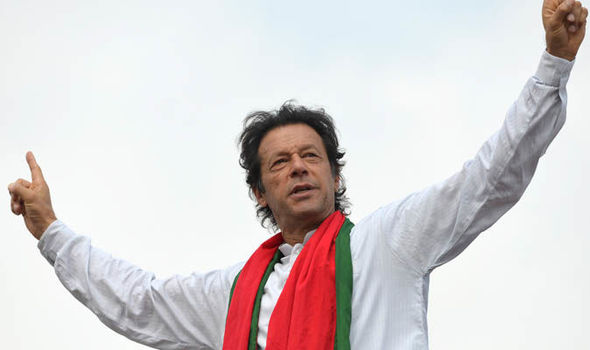President Donald Trump confirmed back in May that the U.S. will be pulling out of the Iran nuclear deal as well as reimposing a sanctions regime on Tehran.
This far-reaching decision by the White House was taken following Netanyahu’s staged presentation on Iran’s nuclear capabilities based on so-called “sound intelligence”. The accession of Mike Pompeo to the the State Department was also an important factor. His predecessor Rex Tillerson was known to be largely supportive of the US “remaining on board with the Iran JCPOA nuclear deal – along with other P5+1 countries Britain, China, France, Germany and Russia”. According to Stephen Lendman:
Replacing Tillerson with militantly anti-Iran hardliner Pompeo smooths things for Trump to pursue greater hostility toward the Islamic Republic with a key administration official on board with his reckless agenda.
Under the guidance of secretary of State Mike Pompeo and his new national security advisor John Bolton, Trump’s decision points in the direction of military escalation.
Already in December 2017, reports pointed to a so-called “secret plan” to destroy and destabilize Iran, the first step of which would be a color revolution. In this regard, Trump said he would relaunch the economic sanctions regime in mid-May “unless the European powers join Washington in unilaterally rewriting the civil nuclear agreement between Tehran and the world’s great powers.”
This not so secret plan to wage war on Iran has been on the drawing board of the Pentagon since the mid-nineties as outlined in my 2010 article below, written eight months prior to the onslaught of the US-NATO led proxy war directed against Syria in March 2011.
It should be noted that there are significant divisions within the US-NATO-Israel coalition largely as a result of Turkey’s rapprochement with Russia and Iran. In turn Turkey is fighting US proxy forces in Northern Syria. Moreover, France has significant interests in Iran’s oil industry.
While the present structure of military alliances (with Turkey sleeping with enemy) does not at this juncture favor the waging of a major military operation against Iran, there are unconfirmed reports that President Trump is currently envisaging a so-called preemptive attack against Iran’s nuclear facilities as early as next month.
US Defense Secretary James Mattis has casually dismissed the reports that the U.S. is contemplating military action against Iran.
Michel Chossudovsky, July 29, 2018
***
Global Warfare. Preparing for World War III? Targeting Iran
By Michel Chossudovsky
Global Research
August 1, 2010
Humanity is at a dangerous crossroads. War preparations to attack Iran are in “an advanced state of readiness”. Hi tech weapons systems including nuclear warheads are fully deployed.
This military adventure has been on the Pentagon’s drawing board since the mid-1990s. First Iraq, then Iran according to a declassified 1995 US Central Command document.
Escalation is part of the military agenda. While Iran [in 2010], is the next target together with Syria and Lebanon, this strategic military deployment also threatens North Korea, China and Russia.
Since 2005, the US and its allies, including America’s NATO partners and Israel, have been involved in the extensive deployment and stockpiling of advanced weapons systems. The air defense systems of the US, NATO member countries and Israel are fully integrated.
This is a coordinated endeavor of the Pentagon, NATO, Israel’s Defense Force (IDF), with the active military involvement of several non-NATO partner countries including the frontline Arab states (members of NATO’s Mediterranean Dialogue and the Istanbul Cooperation Initiative), Saudi Arabia, Japan, South Korea, India, Indonesia, Singapore, Australia, among others. (NATO consists of 28 NATO member states Another 21 countries are members of the Euro-Atlantic Partnership Council (EAPC), The Mediterranean Dialogue and the Istanbul Cooperation Initiative include ten Arab countries plus Israel.)
The roles of Egypt, the Gulf states and Saudi Arabia (within the extended military alliance) is of particular relevance. Egypt controls the transit of war ships and oil tankers through the Suez Canal. Saudi Arabia and the Gulf States occupy the South Western coastlines of the Persian Gulf, the Straits of Hormuz and the Gulf of Oman. In early June [2010], “Egypt reportedly allowed one Israeli and eleven U.S. ships to pass through the Suez Canal in ….an apparent signal to Iran. … On June 12, regional press outlets reported that the Saudis had granted Israel the right to fly over its airspace…” (Muriel Mirak Weissbach, Israel’s Insane War on Iran Must Be Prevented., Global Research, July 31, 2010)
In post 9/11 military doctrine, this massive deployment of military hardware has been defined as part of the so-called “Global War on Terrorism”, targeting “non-State” terrorist organizations including al Qaeda and so-called “State sponsors of terrorism”,. including Iran, Syria, Lebanon, Sudan.
The setting up of new US military bases, the stockpiling of advanced weapons systems including tactical nuclear weapons, etc. were implemented as part of the pre-emptive defensive military doctrine under the umbrella of the “Global War on Terrorism”.
War and the Economic Crisis
The broader implications of a US-NATO Israel attack on Iran are far-reaching. The war and the economic crisis are intimately related. The war economy is financed by Wall Street, which stands as the creditor of the US administration. The US weapons producers are the recipients of the US Department of Defense multibillion dollar procurement contracts for advanced weapons systems. In turn, “the battle for oil” in the Middle East and Central Asia directly serves the interests of the Anglo-American oil giants.
The US and its allies are “beating the drums of war” at the height of a Worldwide economic depression, not to mention the most serious environmental catastrophe in World history. In a bitter twist, one of the major players (BP) on the Middle East Central Asia geopolitical chessboard, formerly known as the Anglo-Persian Oil Company, is the instigator of the ecological disaster in the Gulf of Mexico.
Media Disinformation
Public opinion, swayed by media hype is tacitly supportive, indifferent or ignorant as to the likely impacts of what is upheld as an ad hoc “punitive” operation directed against Iran’s nuclear facilities rather than an all out war. War preparations include the deployment of US and Israeli produced nuclear weapons. In this context, the devastating consequences of a nuclear war are either trivialised or simply not mentioned.
The “real crisis” threatening humanity, according to the media and the governments, is not war but global warming. The media will fabricate a crisis where there is no crisis: “a global scare” — the H1N1 global pandemic– but nobody seems to fear a US sponsored nuclear war.
The war on Iran is presented to public opinion as an issue among others. It is not viewed as a threat to “Mother Earth” as in the case of global warming. It is not front-page news. The fact that an attack on Iran could lead to escalation and potentially unleash a “global war” is not a matter of concern.
The Cult of Killing and Destruction
The global killing machine is also sustained by an imbedded cult of killing and destruction which pervades Hollywood movies, not to mention the prime time war and crime TV series on network television. This cult of killing is endorsed by the CIA and the Pentagon which also support (finance) Hollywood productions as an instrument of war propaganda:
“Ex-CIA agent Bob Baer told us, “There’s a symbiosis between the CIA and Hollywood” and revealed that former CIA director George Tenet is currently, “out in Hollywood, talking to studios.” (Matthew Alford and Robbie Graham, Lights, Camera… Covert Action: The Deep Politics of Hollywood, Global Research, January 31, 2009).

The killing machine is deployed at a global level, within the framework of the unified combat command structure. It is routinely upheld by the institutions of government, the corporate media and the mandarins and intellectuals of the New World Order in Washington’s think tanks and strategic studies research institutes, as an unquestioned instrument of peace and global prosperity.
A culture of killing and violence has become imbedded in human consciousness.
War is broadly accepted as part of a societal process: The Homeland needs to be “defended” and protected.
“Legitimized violence” and extrajudicial killings directed against “terrorists” are upheld in western democracies, as necessary instruments of national security.
A “humanitarian war” is upheld by the so-called international community. It is not condemned as a criminal act. Its main architects are rewarded for their contributions to world peace.
With regard to Iran, what is unfolding is the outright legitimization of war in the name of an illusive notion of global security.
A “Pre-emptive” Aerial attack directed against Iran would lead to Escalation
At present [2010] there are three separate Middle East Central Asia war theaters: Iraq, Af-Pak, and Palestine.
Were Iran to be the object of a “pre-emptive” aerial attack by allied forces, the entire region, from the Eastern Mediterranean to China’s Western frontier with Afghanistan and Pakistan, would flare up, leading us potentially into a World War III scenario.
The war would also extend into Lebanon and Syria.
It is highly unlikely that the bombings, if they were to be implemented, would be circumscribed to Iran’s nuclear facilities as claimed by US-NATO official statements. What is more probable is an all out air attack on both military and civilian infrastructure, transport systems, factories, public buildings.
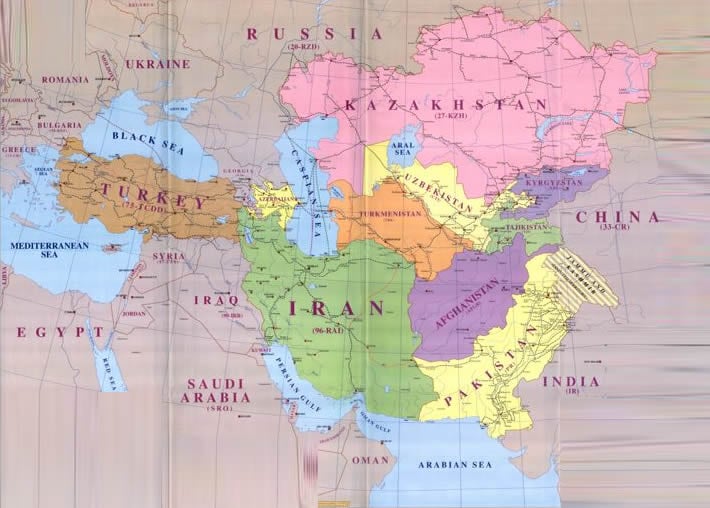
Iran, with an an estimated ten percent of global oil and gas reserves, ranks third after Saudi Arabia (25 %) and Iraq (11 %) in the size of its reserves. In comparison, the US possesses less than 2.8 % of global oil reserves. The oil reserves of the U.S. are estimated at less than 20 billion barrels. The broader region of the Middle East and Central Asia have oil reserves which are more than thirty times those of the U.S, representing more than 60% of the World’s total reserves. (See Eric Waddell, The Battle for Oil, Global Research, December 2004).
Of significance is the recent discovery in Iran of the second largest known reserves of natural gas at Soumar and Halgan estimated at 12.4 trillion cubic feet.
Targeting Iran consists not only in reclaiming Anglo-American control over Iran’s oil and gas economy, including pipeline routes, it also challenges the presence and influence of China and Russia in the region.
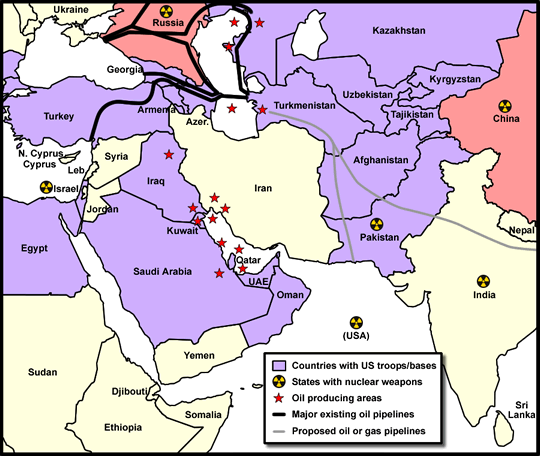
The planned attack on Iran is part of a coordinated global military road map. It is part of the Pentagon’s “long war”, a profit driven war without borders, a project of World domination, a sequence of military operations.
US-NATO military planners have envisaged various scenarios of military escalation. They are also acutely aware of the geopolitical implications, namely that the war could extend beyond the Middle East Central Asia region. The economic impacts on the oil markets, etc. have also been analyzed.
While Iran, Syria and Lebanon are the immediate targets, China, Russia, North Korea, not to mention Venezuela and Cuba are also the object of US threats.
At stake is the structure of military alliances. US-NATO-Israel military deployments including military exercises and drills conducted on Russia and China’s immediate borders bear a direct relationship to the proposed war on Iran. These veiled threats, including their timing, constitute an obvious hint to the former powers of the Cold War era not to intervene in any way which could encroach upon a US-led attack on Iran.
Global Warfare
The medium term strategic objective is to target Iran and neutralize Iran’s allies, through gunboat diplomacy. The longer term military objective is to directly target China and Russia.
While Iran is the immediate target, military deployment is by no means limited to the Middle East and Central Asia. A global military agenda has been formulated.
The deployment of coalition troops and advanced weapons systems by the US, NATO and its partners is occurring simultaneously in all major regions of the World.
The recent actions of the US military off the coast of North Korea including the conduct of war games are part of a global design.
Directed primarily against Russia and China, US, NATO and allied military exercises, war drills, weapons deployments, etc. are being conducted simultaneously in major geopolitical hotspots.
-The Korean Peninsula, the Sea of Japan, the Taiwan Straits, the South China Sea threatening China.
-The deployment of Patriot missiles in Poland, the early warning center in the Czech republic threatening Russia.
-Naval deployments in Bulgaria, Romania on the Black Sea, threatening Russia.
– US and NATO troops deployments in Georgia.
– A formidable naval deployment in the Persian Gulf including Israeli submarines directed against Iran.
Concurrently the Eastern Mediterranean, the Black Sea, the Caribbean, Central America and the Andean region of South America are areas of ongoing militarization. In Latin America and the Caribbean, the threats are directed against Venezuela and Cuba.
US “Military Aid”
In turn, large scale weapons transfers have been undertaken under the banner of US “military aid” to selected countries, including a 5 billion dollar arms deal with India which is intended to build India’s capabilities directed against China. (Huge U.S.-India Arms Deal To Contain China, Global Times, July 13, 2010).
“[The] arms sales will improve ties between Washington and New Delhi, and, intentionally or not, will have the effect of containing China’s influence in the region.” quoted in Rick Rozoff, Confronting both China and Russia: U.S. Risks Military Clash With China In Yellow Sea, Global Research, July 16, 2010)
The US has military cooperation agreements with a number of South East Asian countries including Singapore, Vietnam and Indonesia, involving “military aid” as well as the participation in U.S.-led war games in the Pacific Rim (July -August 2010). These agreements are supportive of weapons deployments directed against The People’s Republic of China. (See Rick Rozoff, Confronting both China and Russia: U.S. Risks Military Clash With China In Yellow Sea, Global Research, July 16, 2010).
Similarly and more directly related to the planned attack on Iran, the US is arming the Gulf States (Bahrain, Kuwait, Qatar and the United Arab Emirates) with land-based interceptor missiles, Patriot Advanced Capability-3 and Terminal High Altitude Area Defense (THAAD) as well as sea-based Standard Missile-3 interceptors installed on Aegis class warships in the Persian Gulf. (See Rick Rozoff, NATO’s Role In The Military Encirclement Of Iran, Global Research, February 10, 2010).
The Timetable of Military Stockpiling and Deployment
What is crucial in regards to US weapons transfers to partner countries and allies is the actual timing of delivery and deployment. The launch of a US sponsored military operation would normally occur once these weapons systems are in place, effectively deployed with the implementation of personnel training. (e.g India).
What we are dealing with is a carefully coordinated global military design controlled by the Pentagon, involving the combined armed forces of more than forty countries. This global multinational military deployment is by far the largest display of advanced weapons systems in World history.
In turn, the US and its allies have established new military bases in different parts of the world. “The Surface of the Earth is Structured as a Wide Battlefield”. (See Jules Dufour, The Worldwide Network of US Military Bases , Global Research, July 1, 2007).
The Unified Command structure divided up into geographic Combatant Commands is predicated on a strategy of militarization at the global level. “The US Military has bases in 63 countries. Brand new military bases have been built since September 11, 2001 in seven countries. In total, there are 255,065 US military personnel deployed Worldwide.” (See Jules Dufour, The Worldwide Network of US Military Bases , Global Research, July 1, 2007
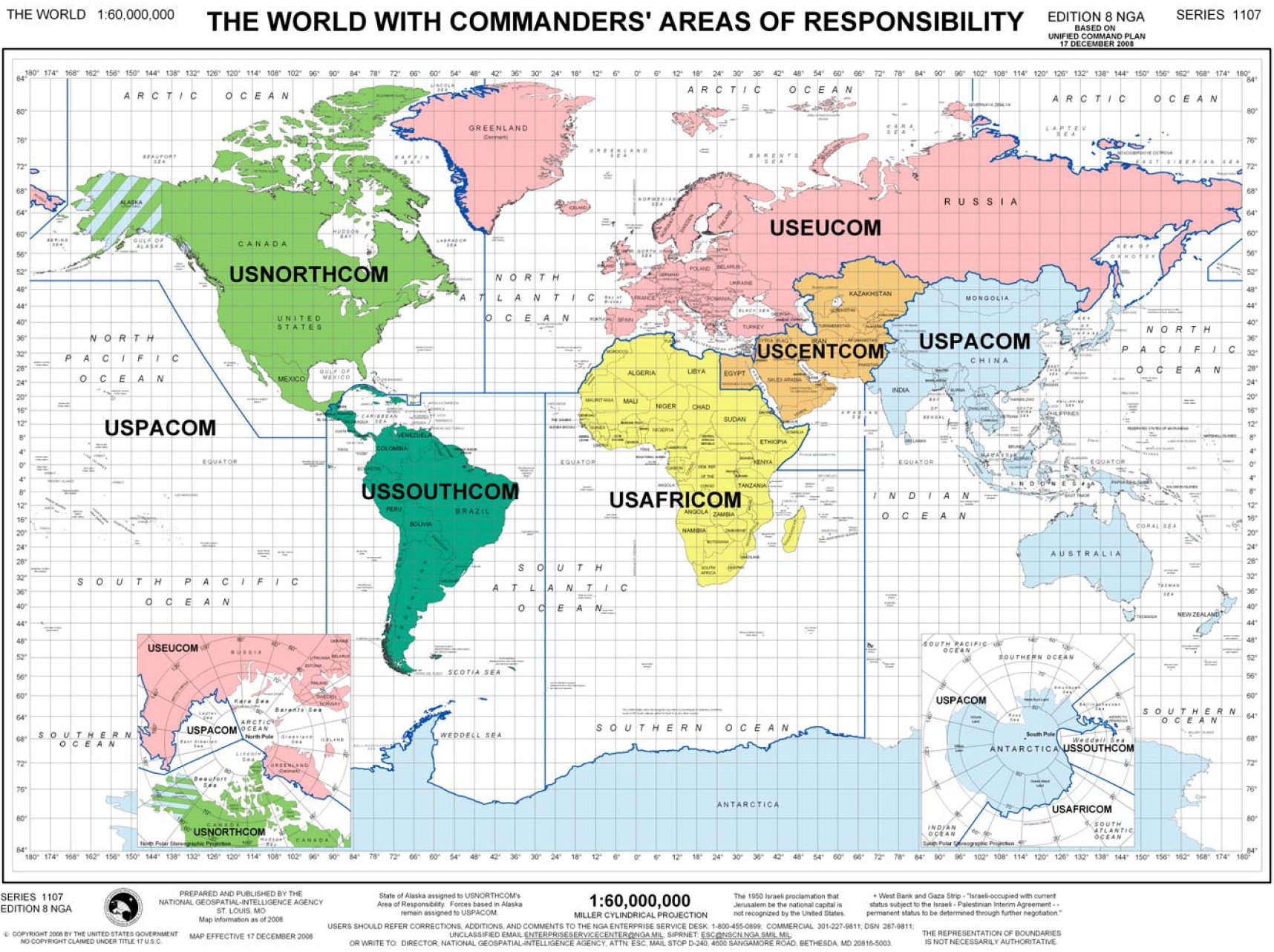
Source: DefenseLINK-Unified Command Plan
World War III Scenario
“The World Commanders’ Areas of Responsibility” (See Map above) defines the Pentagon’s global military design, which is one of World conquest. This military deployment is occurring in several regions simultaneously under the coordination of the regional US Commands, involving the stockpiling of US made weapons systems by US forces and partner countries, some of which are former enemies, including Vietnam and Japan.
The present context is characterised by a global military build-up controlled by one World superpower, which is using its numerous allies to trigger regional wars.
In contrast, the Second World War was a conjunction of separate regional war theaters. Given the communications technologies and weapons systems of the 1940s, there was no strategic “real time” coordination in military actions between broad geographic regions
Global warfare is based on the coordinated deployment of a single dominant military power, which oversees the actions of its allies and partners.
With the exception of Hiroshima and Nagasaki, the Second World War was characterized by the use of conventional weapons. The planning of a global war relies on the militarization of outer space. Were a war directed against iran to be launched, it would not only use nuclear weapons, the entire gamut of new advanced weapons systems, including electrometric weapons and environmental modification techniques (ENMOD) would be used.
The United Nations Security Council
The UN Security Council adopted in early June a fourth round of sweeping sanctions against The Islamic Republic of Iran, which included an expanded arms embargo as well “tougher financial controls”. In a bitter irony, this resolution was passed within days of the United Nations Secrity Council’s outright refusal to adopt a motion condemning Israel for its attack on the Gaza Freedom Flotilla in international waters.
Both China and Russia, pressured by the US, have endorsed the UNSC sanctions’ regime, to their own detriment. Their decision within the UNSC contributes to weakening their own military alliance, the Shanghai Cooperation organization (SCO), in which Iran has observer status. The Security Council resolution freezes China and Russia’s respective bilateral military cooperation and trade agreements with Iran. It has serious repercussions on Iran’s air defense system which in part depends on Russian technology and expertise.
The Security Council resolution grants a de facto “green light” to wage a pre-emptive war against Iran.
The American Inquisition: Building a Political Consensus for War
In chorus, the Western media has branded Iran as a threat to global security in view of its alleged (non-existent) nuclear weapons program. Echoing official statements, the media is now demanding the implementation of punitive bombings directed against Iran so as to safeguard Israel’s security.
The Western media is beating the drums of war. The purpose is to tacitly instil, through repeated media reports, ad nauseam, within people’s inner consciousness, the notion that the Iranian threat is real and that the Islamic Republic should be “taken out”.
A consensus building process to wage war is similar to the Spanish inquisition. It requires and demands submission to the notion that war is a humanitarian endeavor.
Known and documented, the real threat to global security emanates from the US-NATO-Israel alliance, yet realities in an inquisitorial environment are turned upside down: the warmongers are committed to peace, the victims of war are presented as the protagonists of war. Whereas in 2006, almost two thirds of Americans were opposed to military action against Iran, a recent Reuter-Zogby February 2010 poll suggests that 56 % of Americans favor a US-NATO military action against Iran.
Building a political consensus which is based on an outright lie cannot, however, rely solely on the official position of those who are the source of the lie.
The antiwar movement in the US, which has in part been infiltrated and co-opted, has taken on a weak stance with regard to Iran. The antiwar movement is divided. The emphasis has been on wars which have already occurred (Afghanistan, Iraq) rather than forcefully opposing wars which are being prepared and which are currently on the Pentagon’s drawing board. Since the inauguration of the Obama administration, the antiwar movement has lost some of its impetus.
Moreover, those who actively oppose the wars on Afghanistan and Iraq, do not necessarily oppose the conduct of “punitive bombings” directed Iran, nor do they categorize these bombings as an act of war, which could potentially be a prelude to World War III.
The scale of antiwar protest in relation to Iran has been minimal in comparison to the mass demonstrations which preceded the 2003 bombing and invasion of Iraq.
The real threat to global security emanates from the US-NATO-Israel alliance.
The Iran operation is not being opposed in the diplomatic arena by China and Russia; it has the support of the governments of the frontline Arab states which are integrated into the NATO sponsored Mediterranean dialogue. It also has the tacit support of Western public opinion.
We call upon people across the land, in America, Western Europe, Israel, Turkey and around the world to rise up against this military project, against their governments which are supportive of military action against Iran, against the media which serves to camouflage the devastating implications of a war against Iran.
The military agenda support a profit driven destructive global economic system which impoverishes large sectors of the world population.
This war is sheer madness.
World War III is terminal. Albert Einstein understood the perils of nuclear war and the extinction of life on earth, which has already started with the radioactive contamination resulting from depleted uranium. “I know not with what weapons World War III will be fought, but World War IV will be fought with sticks and stones.”
The media, the intellectuals, the scientists and the politicians, in chorus, obfuscate the untold truth, namely that war using nuclear warheads destroys humanity, and that this complex process of gradual destruction has already commenced.
When the lie becomes the truth there is no turning backwards.
When war is upheld as a humanitarian endeavor, Justice and the entire international legal system are turned upside down: pacifism and the antiwar movement are criminalized. Opposing the war becomes a criminal act.
The Lie must be exposed for what it is and what it does.
It sanctions the indiscriminate killing of men, women and children.
It destroys families and people. It destroys the commitment of people towards their fellow human beings.
It prevents people from expressing their solidarity for those who suffer. It upholds war and the police state as the sole avenue.
It destroys both nationalism and internationalism.
Breaking the lie means breaking a criminal project of global destruction, in which the quest for profit is the overriding force.
This profit driven military agenda destroys human values and transforms people into unconscious zombies.
Let us reverse the tide.
Challenge the war criminals in high office and the powerful corporate lobby groups which support them.
Break the American inquisition.
Undermine the US-NATO-Israel military crusade.
Close down the weapons factories and the military bases.
Bring home the troops.
Members of the armed forces should disobey orders and refuse to participate in a criminal war.
Michel Chossudovsky is an award-winning author, Professor of Economics (Emeritus) at the University of Ottawa and Director of the Centre for Research on Globalization (CRG), Montreal. He is the author of The Globalization of Poverty and The New World Order (2003) and America’s “War on Terrorism” (2005). He is also a contributor to the Encyclopaedia Britannica. His writings have been published in more than twenty languages. he can be reached at the globalresearch.ca website
RECENT RELEASE BY GLOBAL RESEARCH

click to order
by Michel Chossudovsky
________________________________________________________________________________
Related Articles
“War without Borders”: Obama’s “Long War”
– by Michel Chossudovsky – 2010-05-15
VIDEO: Will US-NATO Start World War III by Attacking Iran?
– by Michel Chossudovsky – 2010-02-20
Any kind of military action directed against Iran would immediately lead to escalation
Obama and the Nobel Prize: When War becomes Peace, When the Lie becomes the Truth
– by Michel Chossudovsky – 2009-10-11
When fiction becomes truth and truth becomes fiction. When a global military agenda is heralded as a humanitarian endeavor.
US-NATO Military Agenda: The Destabilization of Pakistan
– by Michel Chossudovsky – 2009-04-17
9/11 and the “American Inquisition”
– by Michel Chossudovsky – 2008-09-11
Anybody who opposes the American Inquisition is a heretic conspiracy theorist or an accomplice of the terrorists.
The Eurasian Corridor: Pipeline Geopolitics and the New Cold War
– by Michel Chossudovsky – 2008-08-22
The ongoing crisis in the Caucasus is intimately related to the strategic control over energy pipeline & transportation corridors.
“Naval Blockade” or All Out War Against Iran?
– by Michel Chossudovsky – 2008-08-13
AUDIO: “Iran: All Out War or Economic Conquest”
Radio Interview
– by Michel Chossudovsky – 2008-07-19
Planned US Israeli Attack on Iran: Will there be a War against Iran?
– by Michel Chossudovsky – 2008-05-14
Since the mid-1990s, as part of strategic “sequencing” of “in war theater operations”, USCENTCOM had formulated plans to invade first Iraq and then Iran.
The US-NATO Preemptive Nuclear Doctrine: Trigger a Middle East Nuclear Holocaust to Defend “The Western Way of Life”
– by Michel Chossudovsky – 2008-02-11
For NATO and the Pentagon, the option of a nuclear first strike is indispensable.
Bush’s World War Three
– by Michel Chossudovsky – 2007-10-17
The specter of a nuclear holocaust, which haunted the world for half a century has been relegated to the status of “collateral damage”.
VIDEO: America’s “Long War”. From the Truman Doctrine to the NeoCons
The History of US War Crimes
– by Prof. Michel Chossudovsky – 2007-07-05
It is a profit driven military agenda. The “Global War on Terrorism” is a Fabrication.
“Islamic Terrorists” supported by Uncle Sam: Bush Administration “Black Ops” directed against Iran, Lebanon and Syria
– by Prof Michel Chossudovsky – 2007-05-31
The CIA has received secret presidential approval to mount a “Black Op” to destabilize Iran
The War on Iran.
– by Michel Chossudovsky – 2007-04-01
The US war games were conducted at a time of diplomatic tension and confrontation. Both the US and Iran are on a war footing
The Criminalization of US Foreign Policy
From the Truman Doctrine to the Neo-Conservatives
– by Michel Chossudovsky – 2007-02-05
The World is at the crossroads of the most serious crisis in modern history. The US has embarked on a military adventure, “a long war”, which threatens the future of humanity.
Is the Bush Administration Planning a Nuclear Holocaust?.
Detailed article published in February 2006
– by Michel Chossudovsky – 2007-01-07
The new nuclear doctrine turns concepts & realities upside down. It states that nuclear weapons are “safe” and their use will ensure “minimal collateral damage”.
Nuclear War on Iran
Detailed review first published in January 2006
– by Michel Chossudovsky – 2007-01-07
Planned US-Israeli Nuclear Attack on Iran
– by Michel Chossudovsky – 2007-01-07
The “Demonization” of Muslims and the Battle for Oil
– by Michel Chossudovsky – 2007-01-04
Muslim countries possess three quarters of the World’s oil reserves. In contrast, the United States of America has barely 2 percent of total oil reserves.












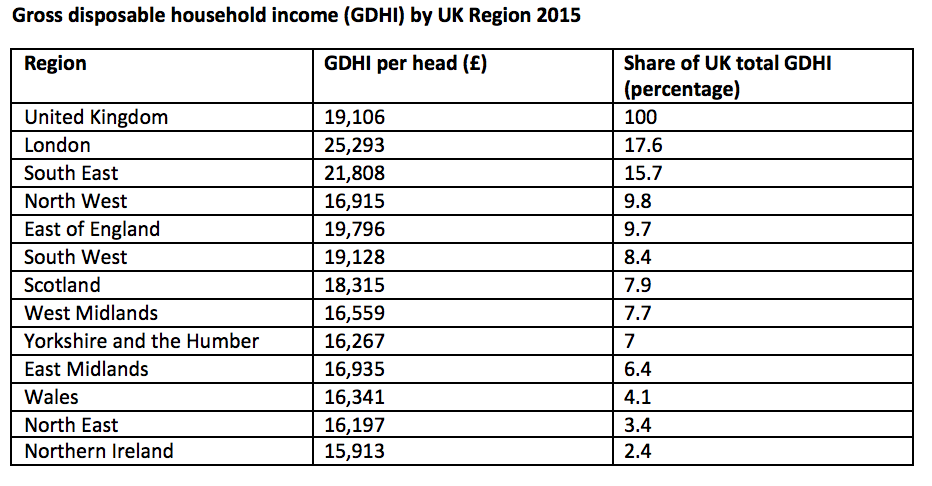

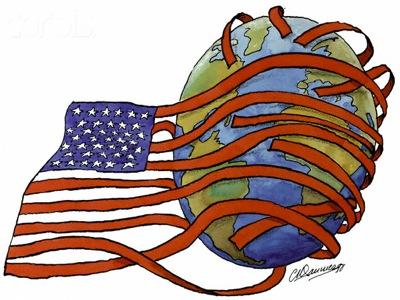


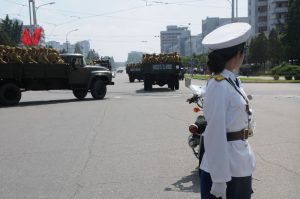


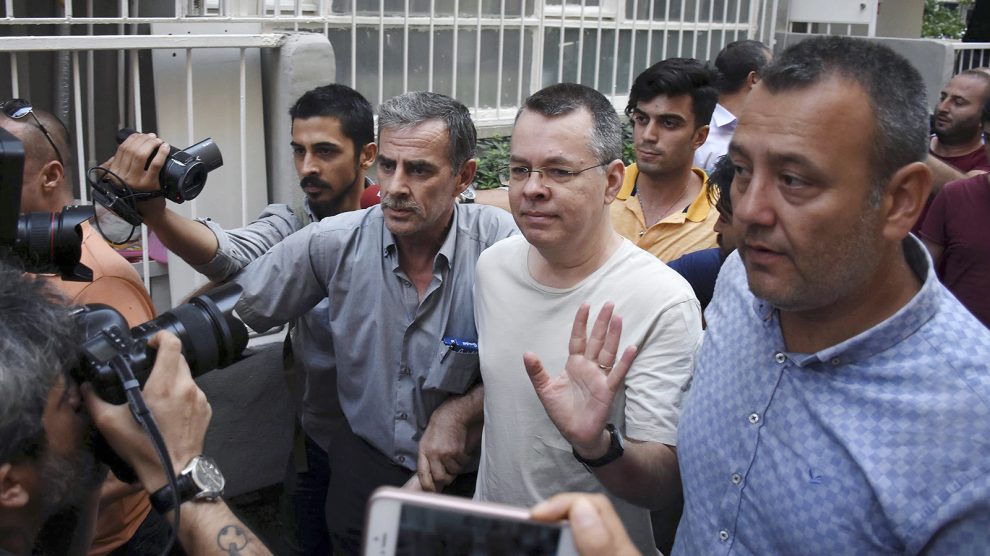
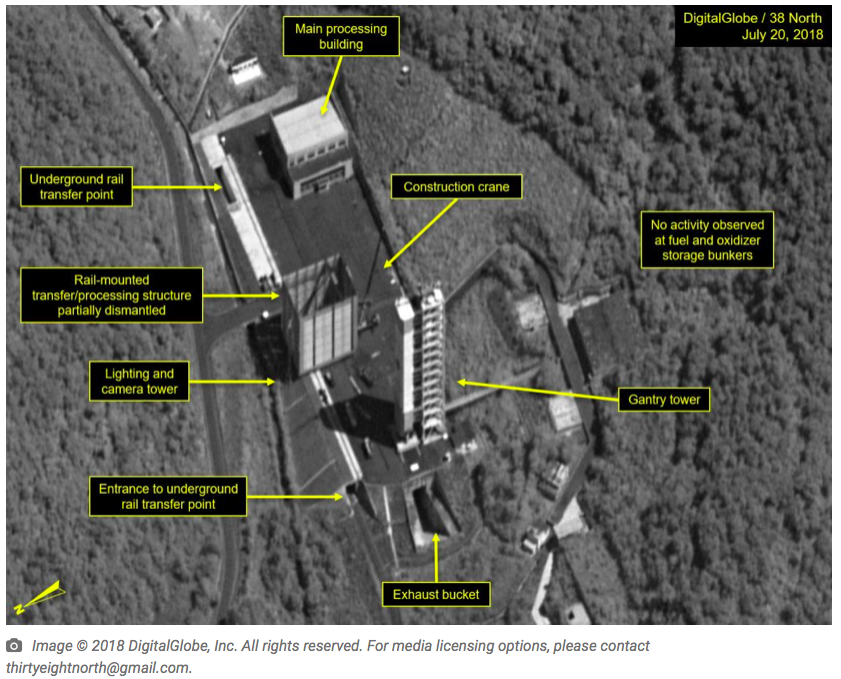


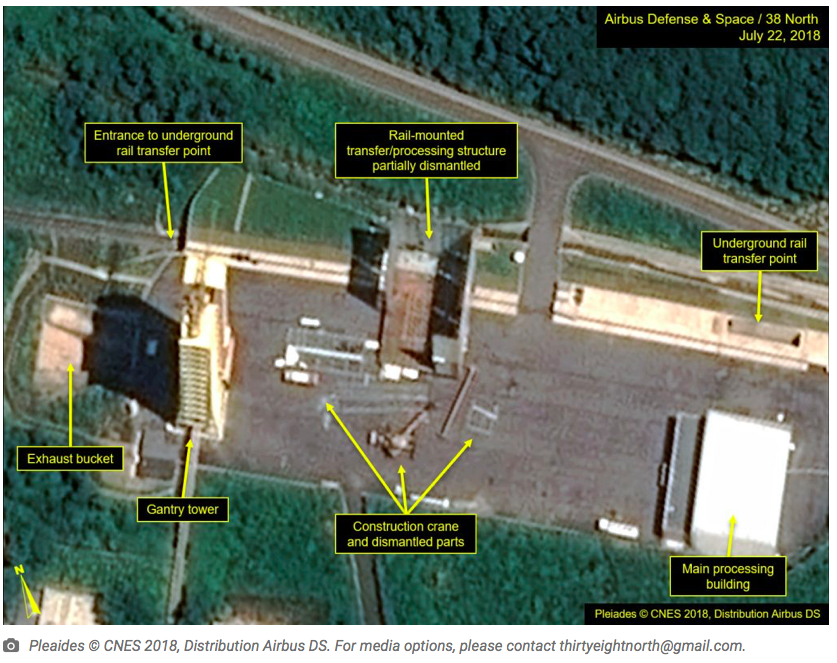
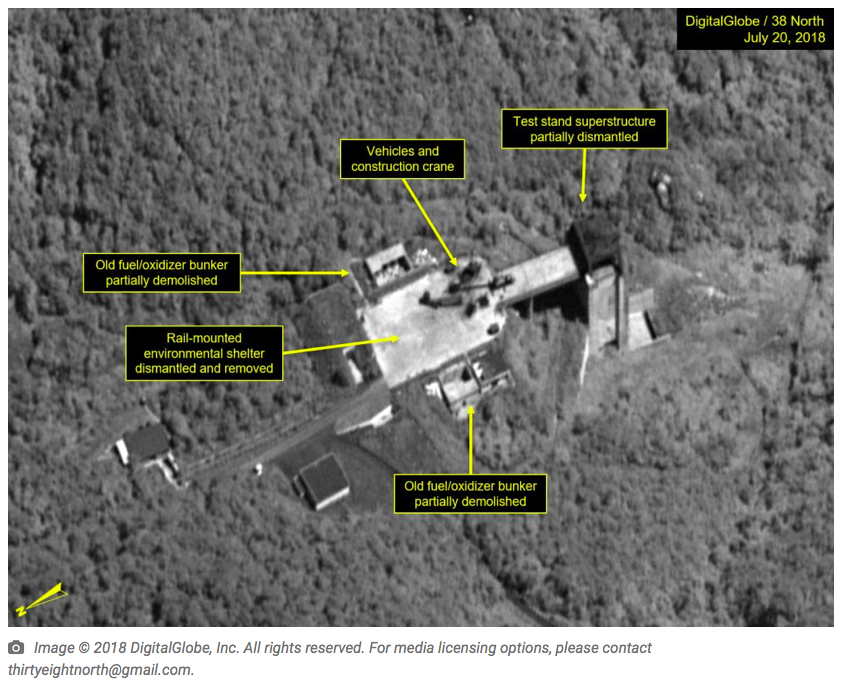
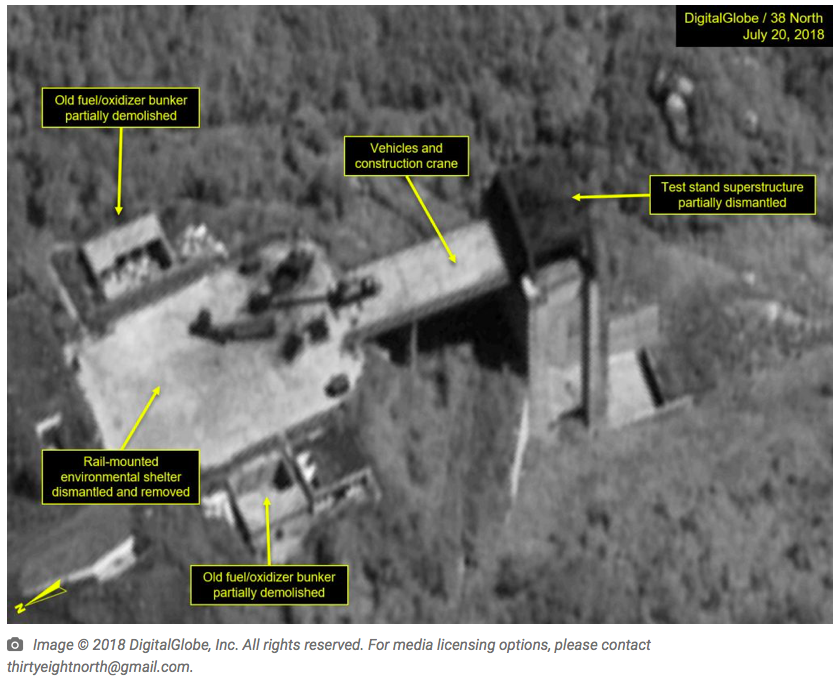
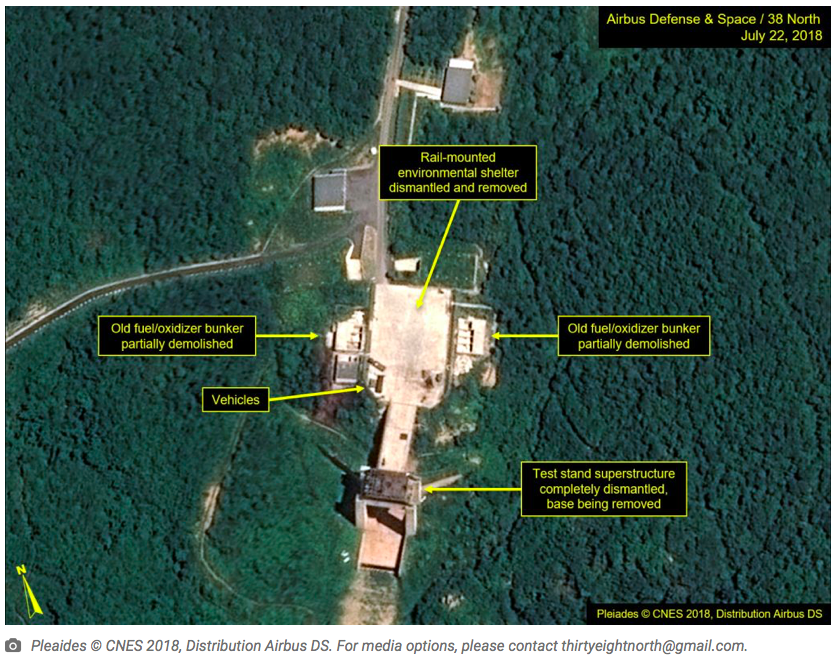
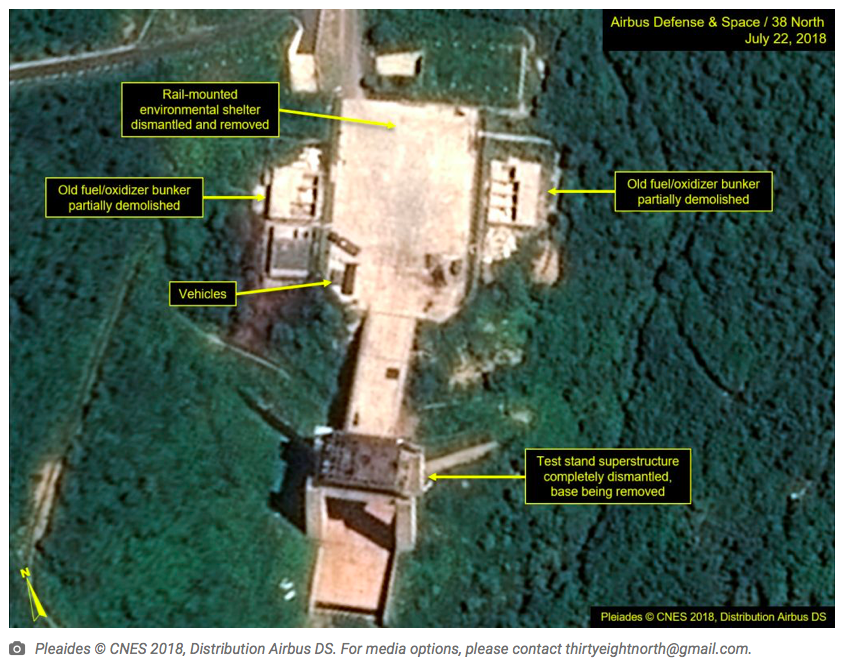

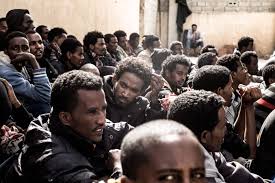
![[Interview] Towards Ending the 65 Years of Armistice: Understanding the process for peace in Korea](http://www.zoominkorea.org/wp-content/uploads/2018/07/Korean-Armistice-News.jpg)
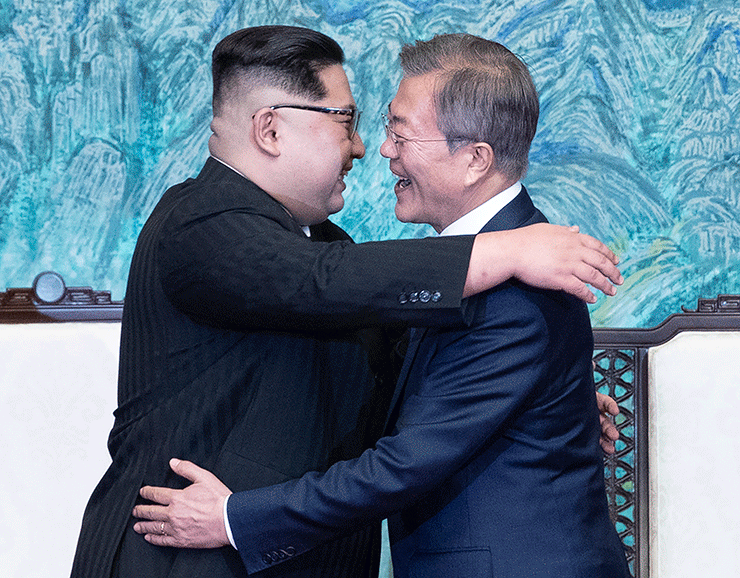



 Amihai was offered to Jewish residents like Buaron by the Israeli authorities as compensation after the evacuation of the West Bank outpost of Amona in
Amihai was offered to Jewish residents like Buaron by the Israeli authorities as compensation after the evacuation of the West Bank outpost of Amona in 